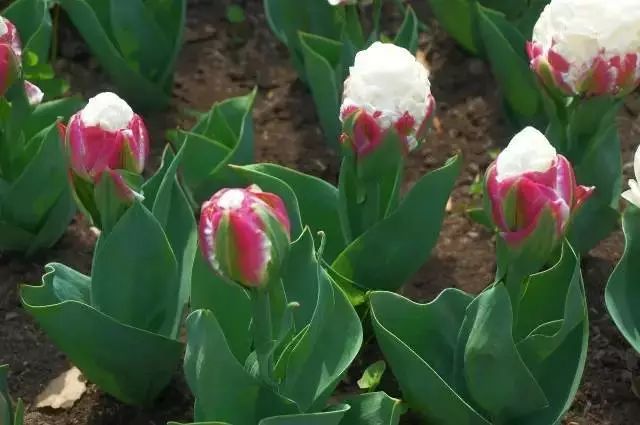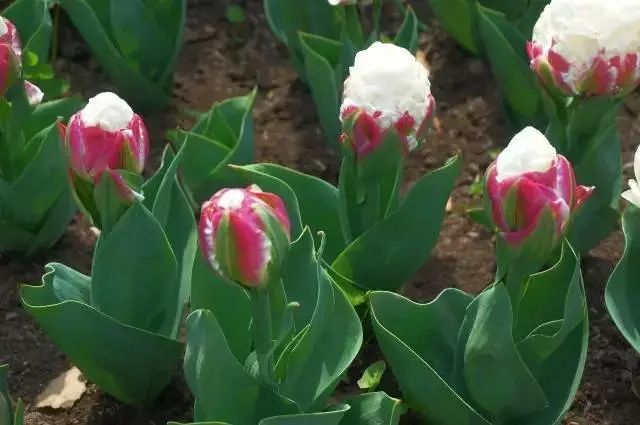“Ice Cream” Tulips: A Delightful Fusion of Nature and Artistry
In the world of horticulture, the “Ice Cream” tulip stands out as a captivating creation that brings a touch of sweet allure. This unique variety, a product of meticulous hybridization, has been enchanting flower enthusiasts since its introduction.

Source: Images from the Internet, if there is any infringement, please contact the removal of
The “Ice Cream” tulip is a sight to behold. Its large, double - flowered blooms can reach up to 4 inches in diameter, dwarfing the typical tulip. The petals are arranged in a way that closely mimics a scoop of creamy ice cream. The inner petals are often a soft, milky white, reminiscent of vanilla ice cream, while the outer petals come in a range of colors, from soft pinks and peaches to vibrant purples and greens. These outer petals are sometimes streaked or edged with other hues, adding to the flower's complexity and charm. The ruffled and fringed edges of the petals further enhance the resemblance to a decadent dessert, making it seem as if nature herself has crafted an edible masterpiece.
Native to the Netherlands, the birthplace of many tulip hybrids, the “Ice Cream” tulip thrives in temperate climates. It requires well - drained soil and a period of cold dormancy to bloom successfully. Gardeners in zones 3 - 8 can plant the bulbs in the fall, around September to December, at a depth of about 5 inches. They prefer full sun to partial shade, and a location sheltered from strong winds. Once established, the plant grows to a height of around 10 - 12 inches, making it perfect for borders, rock gardens, or as a focal point in container plantings.
Despite its delicate appearance, the “Ice Cream” tulip is relatively easy to care for. Regular watering during the growing season, from spring to early summer, is essential, but over - watering should be avoided to prevent bulb rot. After the flowers have faded, it's important to let the foliage die back naturally, as this process allows the bulb to store energy for the next year's growth. Deadheading the spent flowers can improve the plant's appearance and redirect energy towards bulb development.
The “Ice Cream” tulip has become increasingly popular in gardens, floral arrangements, and even at high - end floral shows. Its unique shape and beautiful colors make it a favorite for adding a touch of whimsy and elegance to any setting. Whether planted in a mass display for a bold statement or used sparingly to create a focal point, this extraordinary tulip variety is sure to turn heads and evoke feelings of delight and wonder. As with many tulips, the “Ice Cream” tulip serves as a reminder of the beauty that can be achieved through the art of hybridization and the magic of nature's palette.
-------- END --------






